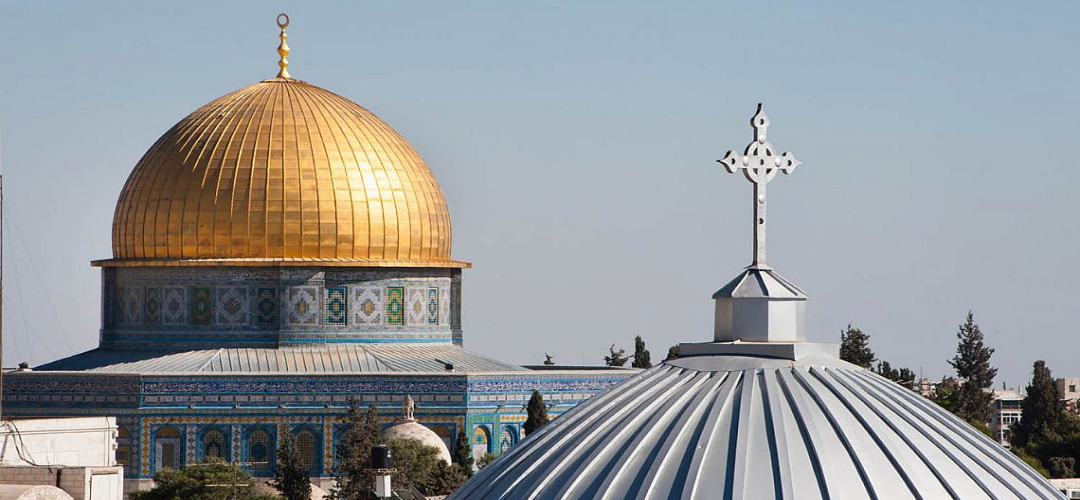How International Perspectives Have Shaped Jerusalem’s Controversial Status
In the heart of the Middle East lies Jerusalem, a beacon of religious zeal for Judaism, Christianity and Islam. With roots stretching back to 4000 BC, its historical and cultural importance needs little emphasis.
In 1917, a new era of conflict was introduced into its already convoluted fabric, with the British gaining control of Jerusalem, after the collapse of the Ottoman Empire. For the next 30 years, the British ruled Palestine under the League of Nation’s mandate. Lord Balfour, then foreign secretary, is widely credited for opening wide the doors to Jewish immigration into Palestine post-1917. Even though the Balfour Declaration laid down that “… nothing shall be done which may prejudice the civil and religious rights of existing non-Jewish communities in Palestine …”, the caveat was observed more in its defiance than compliance!
Post 1917, from a community of barely 25,000 mainly in and around Jerusalem, Jewish numbers grew exponentially year on year. By the end of World War II, the Jewish population had surged to nearly 25 per cent. The independence of Israel in 1948 was to set a spark to the tinderbox that this religiously and ethically divided region had turned into.
Background
Today, Gaza may have pushed Jerusalem into the background, but the centrality of Jerusalem to the entire Palestine issue persists.
Jerusalem houses sacred icons of three great religions- the Temple Mount for Jews, the Church of the Holy Sepulchre for Christians and the Al-Aqsa Mosque and the Dome of the Rock for Muslims. Each of these religious places is so deeply embedded in the very consciousness of not only the Palestinians but also their co-religionists globally that there is little scope for any compromise.
Every power that reigned over Jerusalem viewed its possession through its own lens, and little changed when the UN was entrusted its future in 1948. The partition plan under UN Resolution 181 declared Jerusalem as a ‘corpus separatum’ or separate entity. Most Western Powers generally seemed to support the internationalisation of the city. The Arab States rejected Israel’s claims and considered Jerusalem to be an occupied territory.
When fighting broke out in 1948, Israeli armies occupied West Jerusalem while Jordan retained control of East Jerusalem, including the walled city housing all the important religious landmarks. In 1949, Israel declared Jerusalem as its capital. The Palestinians responded by announcing East Jerusalem as their capital, a demand that persists to date.
The 1967 war saw Israelis completing their capture of the entire city of Jerusalem. The international community meekly objected to this and, through UN Resolution 242, called for the withdrawal of Israeli troops from the occupied territories, including East Jerusalem. The then prevalent international opinion veered towards negotiations between all parties to resolve the issue of Jerusalem. However, the respective religious organisations demanded that their holy sites be handed to them, regardless of the final political decision.
While the Arabs and Israel went back to fighting each other in 1973, the issue became even more intractable and in 1980, Israel reaffirmed Jerusalem’s standing as its capital by promulgating a special law. Only in 1993, in the Oslo Accord, hope for a thaw emerged. The majority of nations, including the EU, supported the two-state solution and reiterated the settlement of Jerusalem, respecting the rights of Israel and Palestine.
The 2000 Camp David Summit came out with a complex solution that was hard to implement: shared sovereignty and international oversight of the religious sites. Israeli Prime Minister Ehud Barak offered Palestinians a peace package with control over parts of Jerusalem and “religious sovereignty” over the Temple Mount. However, Chairman Yasser Arafat would agree to no less than complete control of East Jerusalem as the capital of an independent Palestinian state. Since then, despite the 2007 Annapolis Conference and the Abraham Accord of 2020, little progress has been made in resolving the Jerusalem entanglement. Jerusalem retains its distinction of being the epicentre of the Israel-Palestine Conflict.

Analysis
The lack of progress in international negotiations begs the question – why are both sides unwilling to compromise on Jerusalem? The reasons are not very hard to seek.
The most fundamental cause can be traced to Israel’s stubbornness not to dilute its stand that “the entire city of Jerusalem is its eternal and undivided capital.” The Palestinians, themselves no less stubborn, reflect a similar dogma.
To further muddy the waters, President Trump’s 2017 recognition of Jerusalem as the capital of Israel reversed nearly seven decades of U.S. foreign policy on the issue. A few small nations like Guatemala, Kosovo and Honduras followed suit. Australia recognised and later, in 2022, withdrew its recognition of Jerusalem as the capital of Israel. The UN and EU continue to support the two-state solution, making no preference for any side with respect to Jerusalem.
This clear division of international support has definitely increased political tensions during negotiations, making compromise an unlikely situation. Several other regional actors, such as Saudi Arabia and Iran, have vested interests in the outcome of this issue, which adds another level of complication. Jerusalem has also been the subject of several UN resolutions, but these resolutions have lacked mechanisms that would enforce them.
It is also important to note that security concerns strengthen this breakdown in communication with regard to Jerusalem. Israel fears that relinquishing control over parts of Jerusalem could potentially put it at risk due to Jerusalem’s strategic position. On their part, Palestinians, and the larger Muslim umma, have genuine anxiety about restricted access to important religious sites, such as the Al-Aqsa Mosque, and the potential for desecration of these sites, leading to massive blowback in the Muslim world.
Physical division of the city between two nations is no longer a feasibility. Since its occupation in 1967, Israeli policy has been to quietly spread by displacing the Arabs from their ancestral homes and lands. This has been seen not only in Jerusalem but also in West Bank. Israeli settlements today form a closing ring in and around East Jerusalem. Though considered illegal under international law, these settlements are supported by the Israeli government and make dividing the city in the hope of finding a solution that satisfies both nations even harder.
Perhaps only divine intervention could finally decide the final status of ‘eternal Jerusalem!’
Assessment
- Jerusalem is a microcosm of the larger Israel-Palestine conflict, as it encapsulates all the issues-religious, ethnic and geopolitical- that make this problem such a Gordian Knot. If anything, the issue has hardened with the ongoing destruction in Gaza.
- Both sides have to make significant sacrifices and compromises to invest in future peace that would be sustainable. The Palestinians have as much right to the holy city as the Israelis, and force alone cannot be the adjudicator for the dispute.
- Perhaps instead of chasing ‘perfect justice’, we must realise that the only possible solution is compromise. As celebrated Israeli author Yuval Noah Harari articulated, “Every peace treaty in history was based on compromise, not absolute justice. Justice is essential, but the pursuit of absolute justice can lead you to perpetuate conflict indefinitely, never reaching peace.”




